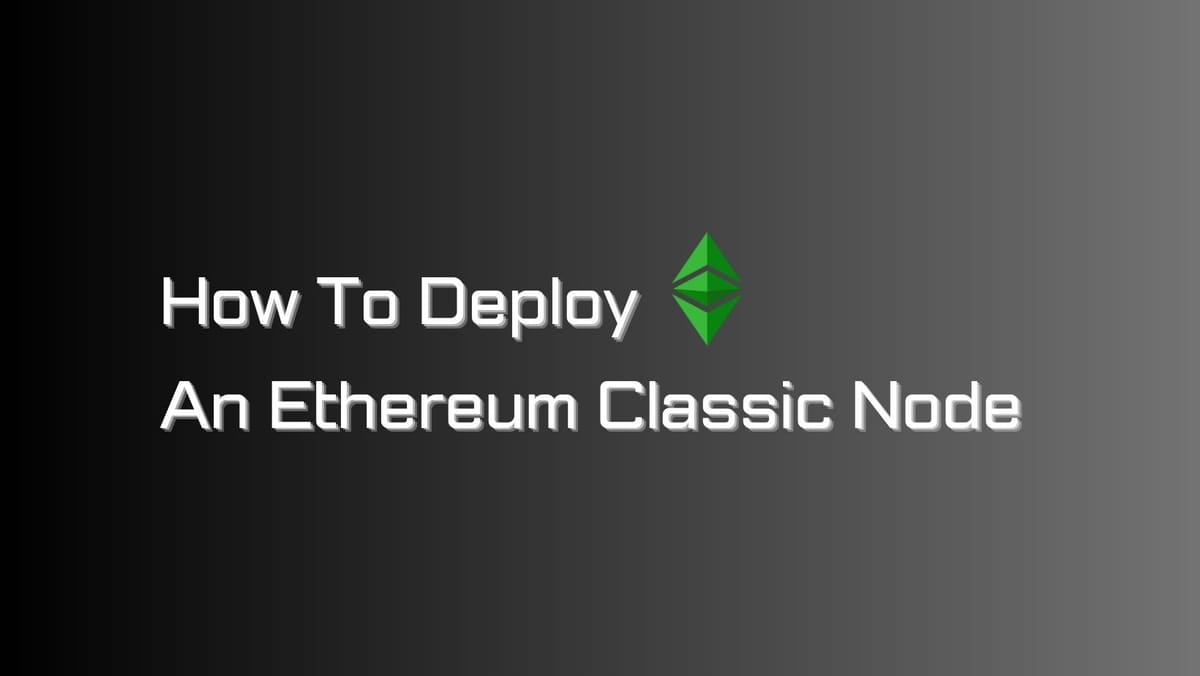How To Deploy An Ethereum Classic Node

If you're interested in running an Ethereum Classic node but don't know where to start, this guide is for you. We will walk you through the basics of nodes, the prerequisites for running an Ethereum Classic node, and the steps involved in installing and configuring a node.
What is Ethereum Classic Node?
An Ethereum Classic node is a machine connected to the Ethereum Classic network. Nodes help add new blocks to the Ethereum Classic blockchain, validate and propagate transactions. There are two types of nodes on Ethereum Classic: block producers (miners) and block verifiers (node operators).
Operating a node is essential for maintaining a decentralized and secure network. The more nodes, the more benefits for the network and its users. Some of the critical advantages of ETC node operation are:
- You support the network by making it more secure and decentralized.
- You have complete control over your data and transactions without relying on third-party nodes.
- You have a local environment to develop and test your applications independently.

How to Set up an Ethereum Classic Node with CoreGeth
Running an Ethereum Classic node with CoreGeth is the most recommended way. CoreGeth is a full-featured Ethereum Classic software client. It is a popular choice for running an Ethereum Classic node with a large community of users and developers who provide support and updates.
To reduce pressure on your device, you can get your node up and running with DappNode (a separate software node). However, this option is more costly.
Download and install the CoreGeth software
- Navigate the official GitHub releases page.
- Find the latest release suitable for your operating system.
- Download the archive file.
- Verify the integrity of the download using its SHA sum.
- Unarchive the downloaded file.
- Run the following command:
gethThis will start a CoreGeth node on the mainnet. You can also start a node on the testnet or Rinkeby networks by using the --testnet or --rinkeby flags, respectively.
Once your node is running, you can interact with it using the built-in JSON RPC API or CLI. For more information on how to use CoreGeth, please refer to the CoreGeth documentation.
Using Docker
Docker provides a convenient way to set up Ethereum Classic. Apart from running the geth image, you can also find images with the full suite of tools using the tag prefix alltools, such as etclabscore/core-geth:alltools.latest, or directly from the associated Dockerfile.
1. docker run
Get Ethereum Classic running with Docker by using the following command:
$ docker run -d \
--name core-geth \
-v $LOCAL_DATADIR:/root \
-p 30303:30303 \
-p 8545:8545 \
etclabscore/core-geth \
--classic \
--http --http.port 8545This command starts geth in fast-sync mode with a 1GB DB memory allowance. It also creates a persistent volume $LOCAL_DATADIR for storing the blockchain data and maps the default devp2p and JSON-RPC API ports.
If you want to access the RPC from other containers and/or hosts, don't forget to add --http.addr 0.0.0.0. By default, geth binds to the local interface, making RPC endpoints inaccessible from the outside.
2. docker pull
Docker images are automatically published on Docker Hub. You can pull the latest image using:
docker pull etclabscore/core-geth:latest
For specific versions, follow this format:
docker pull etclabscore/core-geth:v1.12.9
Note: Starting from version v1.12.9Docker Hub tags have changed to match the repository tags (e.g., v1.12.9). The previous format (version-X.Y.Z) will be supported until the version 1.12.11 but will be discontinued after that.





